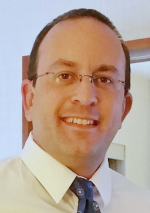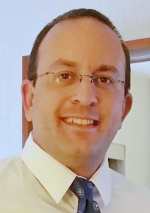Designing Power System Substations for Grid Reliability – Salt River Project Design Perspective

Power system substation design and protection is a unique “art” that requires specialized standards to meet every changing system reliability needs, especially with the high level of renewable integration taking part on the Bulk Electric System (BES). Each utility interprets substation design and protection standards differently based on each utilities unique participation in the wider connected grid. A utility operating as a generation operator with no transmission system may see the design of substations as a sole conduit to transmit the output of their generation resource with less regard for voltage control and overall system reliability. A utility operating as a transmission provider may be solely focused on reliable transmission of power and equipment damage protection with less focus on balancing generation to load (Balancing Authority jurisdiction). A utility operating as a Balancing Authority (BA), which is also vertically integrated (i.e. owns generation, transmission and serves load), has a requirement of ensuring substations are designed to ensure load/generation balancing as well as transmission reliability and voltage support. All of these aspects make designing substations a specialized art for each utility, the reason for which universities do not offer courses in substation design. This presentation will focus on substation design from Salt River Project’s standards. The course will cover analyzing and discussing SRP substation one line diagrams, three line diagrams and substation equipment schematics to give a glimpse into the engineering that goes into ensuring a power system operates correctly.
Date and Time
Location
Hosts
Registration
-
 Add Event to Calendar
Add Event to Calendar
Speakers
 Mr. Matthew Rhodes of SRP, Grid Operations Support
Mr. Matthew Rhodes of SRP, Grid Operations Support
Designing Power System Substations for Grid Reliability – Salt River Project Design Perspective
Power system substation design and protection is a unique “art” that requires specialized standards to meet every changing system reliability needs, especially with the high level of renewable integration taking part on the Bulk Electric System (BES). Each utility interprets substation design and protection standards differently based on each utilities unique participation in the wider connected grid. A utility operating as a generation operator with no transmission system may see the design of substations as a sole conduit to transmit the output of their generation resource with less regard for voltage control and overall system reliability. A utility operating as a transmission provider may be solely focused on reliable transmission of power and equipment damage protection with less focus on balancing generation to load (Balancing Authority jurisdiction). A utility operating as a Balancing Authority (BA), which is also vertically integrated (i.e. owns generation, transmission and serves load), has a requirement of ensuring substations are designed to ensure load/generation balancing as well as transmission reliability and voltage support. All of these aspects make designing substations a specialized art for each utility, the reason for which universities do not offer courses in substation design. This presentation will focus on substation design from Salt River Project’s standards. The course will cover analyzing and discussing SRP substation one line diagrams, three line diagrams and substation equipment schematics to give a glimpse into the engineering that goes into ensuring a power system operates correctly.
Biography:
Matthew Rhodes is a Principal Engineer in Grid Operations Support at Salt River Project (SRP) in Phoenix, Arizona. He has worked in System Protection at SRP for 13 years working on field designs, relay settings and commissioning. Matthew is an SME on SRPs synchrophasor network and has worked on developing new methods to improve synchrophasor data networking and archive management to enable the discovery of new tools and methodologies for the enhancement of electric grid resiliency. He serves as Co-Chair for the North American Synchrophasor Initiative Engineering Analysis Task Team and is an SRP EPRI Task Force Lead for program P173: Bulk System Integration of Renewables and Distributed Resources and contributes to research in program P39.015: Monitoring, Control, and Data Analysis including synchrophasors.
